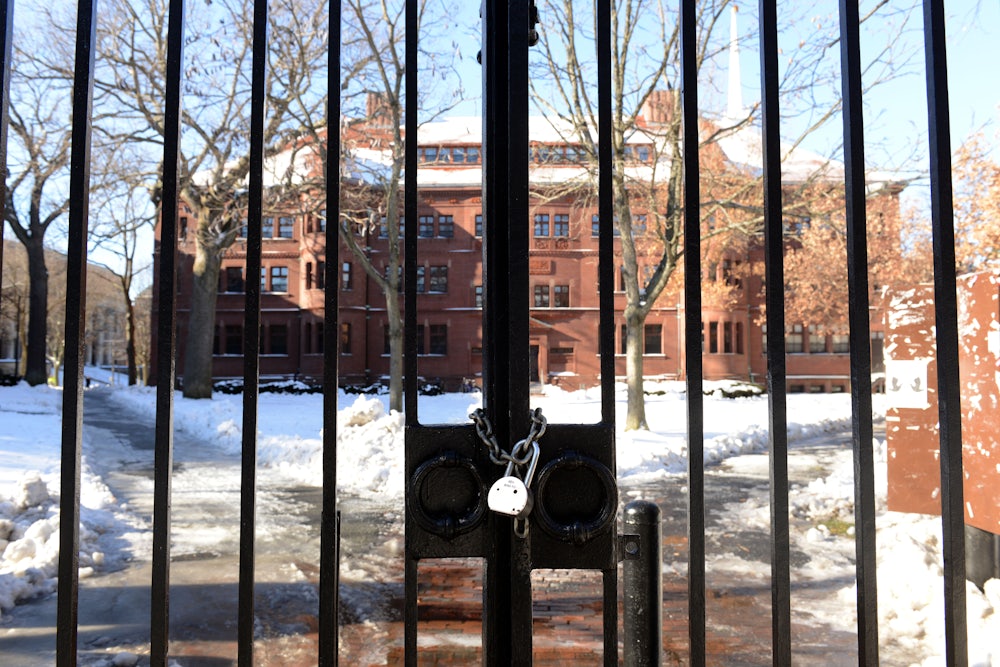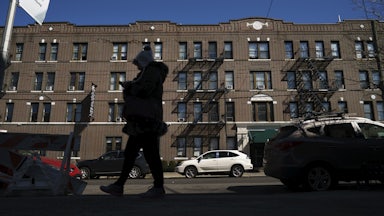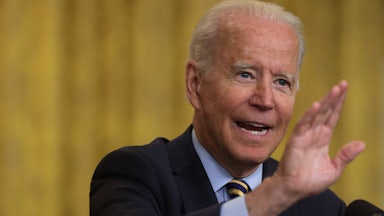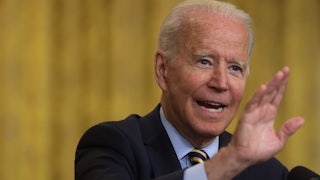In a unanimous decision last month, the Supreme Court ruled that universities’ long-standing practice of colluding through the NCAA to limit education-related financial benefits for college athletes violated antitrust laws. “The NCAA is not above the law,” declared Justice Brett Kavanaugh in his widely praised concurrence.
It is not widely known, however, that Congress and the executive branch have allowed the eight colleges belonging to the Ivy League to circumvent antitrust laws by apparently agreeing to limit the amount of aid deserving students can receive. Section 568 of the Higher Education Act, in place for decades, effectively makes it harder for sought-after students—particularly students of color—to attend the nation’s most prestigious universities. It amounts to a giveaway to institutions with large endowments, which, thanks to the federal government, are freed from truly competing through financial aid offers to candidates they especially would like to enroll.
The absence of financial aid competition in the Ivy League has a long history. Beginning in the mid-twentieth century, the Ivies and MIT had been comparing aid awards for students admitted to two or more of these schools and then fixing the awards for every student who needed the money, effectively capping the scholarships thousands of students could receive. The schools rationalized this naked price-fixing by asserting that if they had to compete on awards, they wouldn’t have enough money to assure that every student admitted would get their full “need-based” allotment.
When the Justice Department’s antitrust division discovered this arrangement during the George H.W. Bush administration, it sued the colleges, and the Ivies promptly settled, agreeing to quit all forms of colluding to limit financial aid. MIT, however, chose to go to trial. A federal district court in Philadelphia not only found the collusion to be unlawful, it rejected the claim that without the collusion the Ivies and MIT would not continue their need-blind admissions policies.
MIT earned a retrial on appeal, dragging the case into the Clinton administration. The Clinton Justice Department didn’t want to take that ruling to the Supreme Court, fearing it would bless this quasi-exemption from the antitrust laws. I know because I was there at the time, as deputy assistant attorney general for antitrust. During my first week on the job, I was assigned the (thankless) task of figuring out what to do. Ultimately, higher-ups in the department gave me strong signals to find a way to settle with MIT.
Eventually, that is what we did. The settlement prohibited MIT from fixing individual aid awards, but unlike the Ivy consent decree, allowed MIT to agree with other schools on a formula for limiting aid to financial need only and to share aggregated historical data about the frequency of major “outliers” of financial aid awards, so long as the schools committed to need-blind admissions. The next year, led by Senators Ted Kennedy and Howard Metzenbaum, Congress extended the basic terms of the MIT settlement (absent the data-sharing provision) to all schools via Section 568 of the Higher Education Act.
That is how the Ivy League schools have been able since 1994 apparently to agree to decline to offer merit awards of any type—for academic excellence, musical talent, debate skills, athletic performance, or any other ability—and give scholarships based solely on the student’s financial situation. In other words, to do precisely what the Supreme Court has just told the NCAA it now cannot do for athletes.
But there’s a catch. This antitrust exemption expires at the end of September 2022. What will the Ivy League schools do as that date approaches, and what impacts might other schools and students more broadly feel if the exemption is not renewed, as it has been before?
The Ivies could dig in their heels, lobby Congress to extend Section 568, or wait and run the risk of being sued, by parents or by the Department of Justice again. But a better path would be to embrace competition and move toward a “need-plus” financial aid policy, supplementing their current need-based awards that now enable students from low-income families to attend these schools at low or no cost—though not always without hardship—with additional sums for whatever types of other students each school would most like to attract.
The notion that the Ivies or other well-endowed schools have a fixed pot of money for financial aid and therefore can only provide generous need-based assistance to all if they do not hand out supplements for merit, or to attract specific types of students they want, is obviously false. Ample endowments are there to be used for the benefit of students, not simply to grow ad infinitum. If added competition for students induced some schools to spend a bit more of their endowments than the legally required 5-percent-of-assets minimum, that would be a good outcome. Ivy endowments have been growing for years, with new contributions and earnings well in excess of 5 percent over the long run.
Moreover, once the Ivies start competing, that would stimulate other private and public schools that already provide merit awards of all types to enhance their aid packages. This would be the case even if Congress enacts the Biden administration’s plan for free tuition at public universities. Those schools then would compete for the students they are most seeking by offering room and board, which is not covered by the administration’s tuition proposal.
To be sure, two famous studies conducted by the late Alan Krueger of Princeton and Stacy Dale of Mathematica, earlier this century, found that for most students the benefits of attending selective private schools are overrated. But that is not true, the authors found, for Black and Latinx students, and those from low-income families or whose parents did not attend college. These students benefit from the networking and challenges offered by colleges like the Ivies and other selective colleges.
High-achieving students of color are also among the most sought-after students for selective schools, because these colleges are generally committed to having diverse student populations. Any claim that the Section 568 antitrust exemption is needed to ensure that students from low-income families, especially those of color, are provided their full financial need is not borne out by the available evidence. Students of color (from all economic backgrounds) would benefit from competition among the Ivies and other big-name universities.
Moreover, aid competition could help reverse the trend toward declining enrollments of middle-class students at selective schools. The extraordinary sticker price of attending these institutions—$80,000 per year or more for tuition, room, and board—is prohibitive for many middle-class families, who may need to cough up $10,000 per year or more, even with need-based financial aid. Once the Ivies join other schools in the financial aid marketplace, more middle-class students from all backgrounds would find it more financially feasible to enroll.
The Supreme Court has now barred the NCAA from imposing limits on financial education benefits for athletes. But it took the NCAA only about two weeks after that decision to reverse a long-standing policy against college athletes receiving money outside of their athletic scholarships. Effective July 1, all NCAA schools can allow their student athletes to be paid for their “names, image and likeness” (NIL rights), provided the compensation is not tied to their performance in contests. In this environment, it would defy logic and fairness for Congress again to renew Section 568 and allow any group of colleges to collude on financial aid policy affecting all other students.








